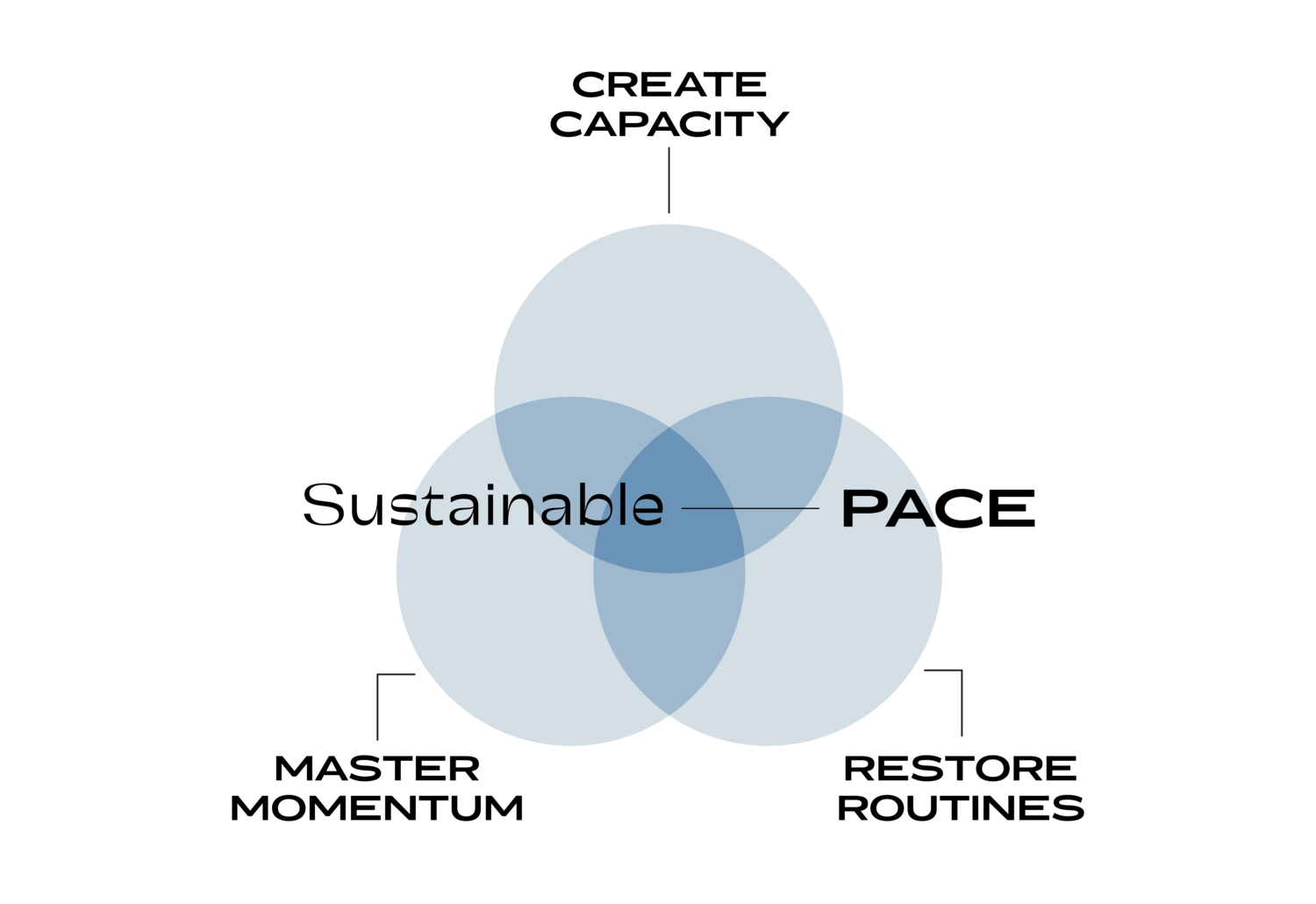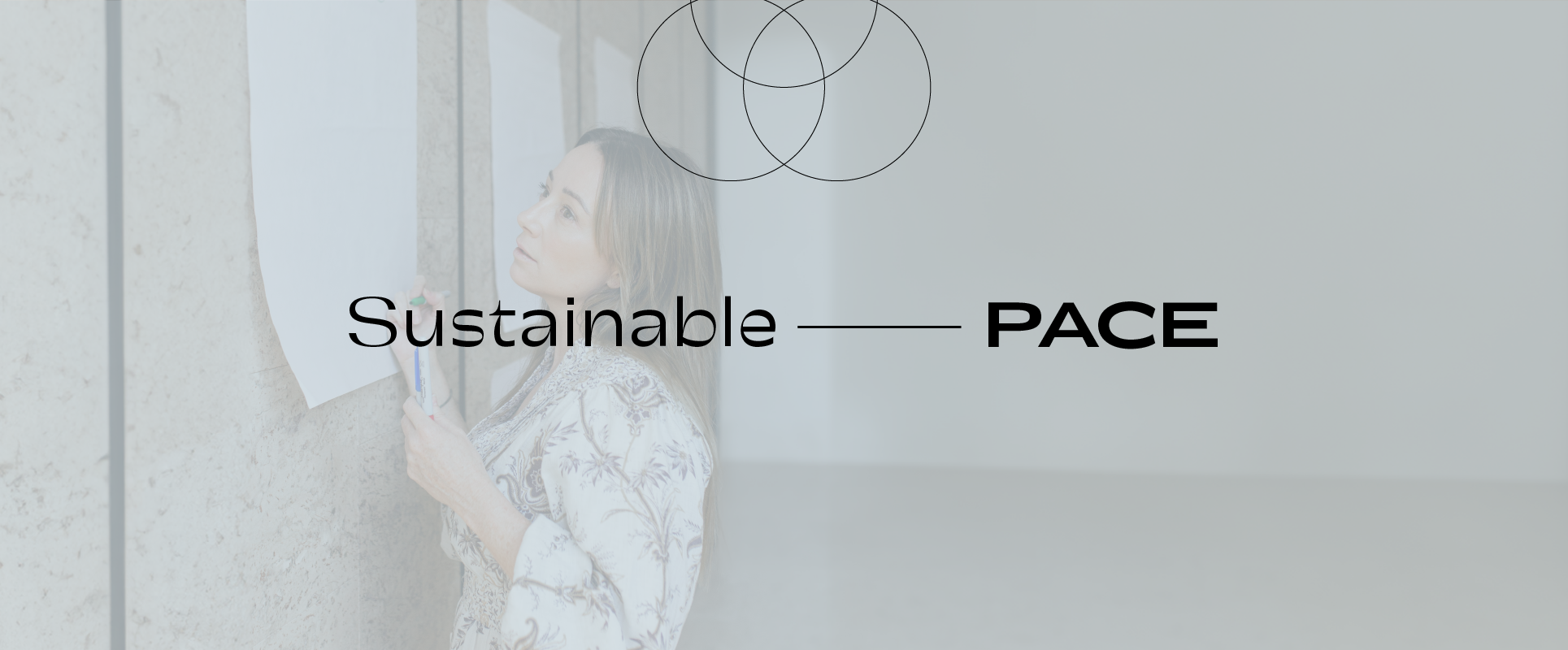Spring clean your mind with these five ways to mentally declutter
One thing we often hear come springtime—apart from how high the pollen count is—is that now is the perfect opportunity to refresh our physical spaces.
Literally, do a ‘spring clean’. Dust away the winter cobwebs. Wash the windows, scrub the floors, refresh the linens, and air out those stale and dank areas of your house.
We can all do with inviting a little freshness and warmer weather into our homes, and into our lives, after a long and frosty winter.
But how can we refresh and reset our minds?
Clutter isn’t just about the piles of paper on your desk or the endless to-do lists; it’s also what accumulates in our minds—the mental equivalent of too many tabs open. Mental clutter is that whirlwind of thoughts, worries, and distractions that crowd your brain space, making it hard to focus and easy to lose sight of what’s truly important.
For some, it’s the lingering guilt of past decisions, the stress of uncertainty and chaos, and the constant juggle of responsibilities that make knowing where to start feel impossible. It’s also the emotional drain from the relentless stream of information demanding your attention, and the seemingly endless string of decisions that you need to make from what to cook for dinner to who’s going to follow-up with that client.
THE SCIENCE BEHIND THE OVERWHELM
Human brains are amazing, they really are. They are designed to process vast amounts of information, and they do so pretty well most of the time. But in our hyper-connected world, our cognitive abilities can become severely depleted by the constant barrage of stimuli. From social media notifications to 24/7 news alerts, information overload can start to jam up the airwaves and override our rational thinking brain, leaving us stuck in a never-ending loop of limbic hijack.
Neuroscientists have proven (and it’s no great surprise) that our brains need regular periods of rest and reflection to function at their best. Just as we regularly tidy up our spaces, fill up our tanks, and charge our phones—we must deliberately give our minds the opportunity to refresh, unplug, reset, and be idle.
How can we defrag the mental load and realign our inner world for greater clarity, and focus on what truly matters?
A LIFE HAPPENING BY YOU, NOT TO YOU
When your mind is cluttered, it’s easy to feel like life is happening to you—like you’re constantly reacting to the chaos rather than confidently steering the ship. It’s time for an upgrade. By taking control of what is allowed to take up your precious mental space, you shift from being a passive participant to an active creator of your own life. Decluttering your mind isn’t just about reducing overwhelm; it’s about being in the driver's seat of your life, making intentional choices, and aligning your actions with your values, goals and purpose.
Mental clarity, after all, is a key element of living a life in alignment with our values and making decisions that feel right for who we are and where we’re at right now.
Before we share a few tools and practices to help you clear the noise and focus on what truly matters, let’s stop for a moment and listen to what nature is trying to tell us about why a seasonal reset is a non-negotiable part of being a high-performing leader and unlocking a more sustainable pace.
SPRING IS FOR RECLAIMING YOUR FOCUS
Universally recognised as a period of rejuvenation and rebirth, both in nature and in cultural practices worldwide, Spring in a Western sense marks the transition from winter to summer. Also known as the vernal season, it typically occurs between March and June in the Northern Hemisphere and between September and December in the Southern Hemisphere; a time for coming out of hibernation and allowing ‘new life’ to emerge.
WISDOM FROM OTHERS
Many First Nations communities in North America honour this season with sacred ceremonies that symbolise the renewal of ancestral ties, the transmission of ancient wisdom to future generations, and gratitude for abundance, including Maple Syrup Ceremony and First Salmon rituals.
Celtic Beltane traditions include lighting bonfires and dancing to celebrate the Earth’s reawakening. Holi and the Festival of Colours is celebrated across India and Nepal, while Cherry Blossom Festivals throughout Japan bring people together to appreciate nature’s fleeting beauty, and acknowledge the impermanence of life.
Noongar people of southwestern Australia, the season that roughly corresponds to Spring is called ‘Djilba’—a season of conception occurring between August and September, characterised by a mix of wet and cold weather, with increasing sunshine. A time of significant transition, this season is marked by the ‘explosion’ of wildflowers, the birth of new life, and the gathering of food such as yams and early-season berries.
Drawing inspiration from the world around us, and what we know from shaping the Inner Development Goals (IDGs), how can you use the season you’re in to recalibrate and sharpen your ability to navigate the fast pace and lead with purpose?
THE IMPORTANCE OF A SEASONAL RESET
In a world that demands constant motion, it’s easy to slip into autopilot—running the same routines and operating systems that got us here, without taking a moment to pause and consider whether they still serve us (and the world). A seasonal reset is not a luxury; it’s part of building resilience and intelligent action that aligns our internal rhythms with the external world.
Rather than mindlessly following ‘the way things have always been done’, a seasonal reset allows us to consciously adapt, fostering a more sustainable pace, and making deliberate adjustments to ensure that our actions are intentional and aligned with the season we’re in.
Find out more about our signature program: 'Sustainable PACE' ↗
And this is where the IDGs can help form the foundation of our seasonal reset. At their heart, the IDGs are about harnessing what’s already within, and growing our self-awareness muscles to improve our ability to show up and generate greater ripple effects of change. Because change that leaves behind who we are being will always be inadequate at best, and destructive at worst.
On that note, here is a foundher. five for mental decluttering so we can better contribute to broader, systemic transformation both within ourselves, and in the world.
1. CLEAR OUT THE COBWEBS
Our minds, much like our homes, can become cluttered with unnecessary thoughts, worries, and distractions. This season, take time to identify the mental clutter that’s been accumulating. Are there thoughts or worries that no longer serve you? What about to-do lists that are more about busyness than progress? Things that you keep deprioritising or finding excuses not to do? Start by jotting down everything that’s occupying your mind and then intentionally let go of what’s not aligned with your core values and goals.
🧹Tip: Practise a daily ‘mental floss’ where you spend 5-10 minutes tipping out onto the page everything that’s SWIRLING within you. This act can help clear space in your mind, making room for clarity and focus. Our SustainHER Daily Performance Planner has the perfect space for it, if you need a nudge.
2. RECONNECT WITH YOUR INNER COMPASS
We like to think of our ‘inner compass’ as the core values and beliefs that guide our most-aligned actions and decisions. Figuring out which direction the compass is pointing in is built off the back of things like self-awareness and becoming an ‘A+ noticer’. This Spring, can you make a conscious effort to check in with your inner compass? Are your actions aligned with your values? Are you living in a way that feels authentic to you?
🧹Tip: Schedule regular moments of reflection throughout your week to assess how your daily actions align with your inner compass. Use these reflections to recalibrate your daily rhythms, rituals and routines—and make any necessary adjustments.
3. STREAMLINE YOUR MIND SPACE
In a world where complexity is everywhere and attention is currency, simplifying your mental space can be considered a radical act of self-care. At its core, self-care starts with being self-aware. It’s designing, from the inside out, what creates calm and recharge for you, rather than taking off the shelf what works for someone else.
Consider how you can reduce your mental overload by simplifying your daily routines, reducing your digital consumption, and setting clear boundaries. The goal is to create more space for deeper thinking, creativity, gratitude, and a stronger connection to what truly matters to you.
Tip: Be selective about what information you consume, and when you consume it. Choose an hour, a day, or a weekend to do a ‘digital detox’ where you disconnect from screens, turn off notifications and focus on being present in the moment. This can help reduce mental fatigue and improve your overall wellbeing.
4. CULTIVATE YOUR EMOTIONAL COMPOST
Just as composting transforms organic waste into nutrient-rich soil, emotional composting allows you to process and transform your emotional experiences into valuable insights and growth. Instead of letting feelings like guilt, frustration, or stress accumulate and overwhelm you, this practice encourages you to consciously reflect on and understand these emotions, turning what might initially seem like waste into a powerful resource for personal and professional development.
🧹Tip: When you notice a strong emotional reaction, that’s your cue to take a pause. Ask yourself: “What is this emotion? What am I making this mean for myself? And what clues can I glean about where there is work still to do?” Journaling your thoughts or discussing them with a trusted friend or coach can help you process and integrate the insights into your daily life.
5. PRACTISE INTENTIONAL PRESENCE
Spring’s energy invites us to cultivate habits that nourish our mind and spirit. Moving beyond mindfulness and spending time in nature, we encourage you to shift the focus to intentional presence—being fully engaged in the moment with purpose. This involves not just being aware of your thoughts but choosing to immerse yourself in activities that align with your values and long-term goals. It’s about being present in a way that drives meaningful action and contributes to your broader vision for impact.
🧹Tip: Start your day by setting a clear intention for how you want to show up, known around here as decide who you’re BEing. And then at regular intervals throughout your day, or before beginning a new activity, take a deep breath and remind yourself of this intention, allowing it to guide your focus and actions.
READY TO EMBRACE THE SEASON YOU’RE IN?
Whether it’s Summer, Winter, Autumn or this season—Spring—embrace the opportunity a change of seasons presents to declutter your mind and realign with your inner compass. The real invitation (and delight) here is getting to know yourself at a whole new level, and to get good at receiving and giving to yourself first.
Want to learn how to better navigate the season you’re in for greater ease, and create a foundation for sustainable growth? Find out more about our signature 8 week online program for high-performers → Sustainable PACE
Want to completely reset and recharge for the season ahead? Immerse in our Reset YOU programs that run annually and are designed for the ultimate in person guided recharge and transformation for those seeking to redefine what high performance looks like. Reset YOU Immersions





